HOW TO
Detect and quantify temporal changes using the Raster Calculator tool in ArcGIS Pro
Summary
Temporal change can be detected by comparing two rasters from different times, such as detecting changes in vegetation cover or land use over a specified period. This can be done with the Raster Calculator tool or Difference function in ArcGIS Pro, allowing for further interpretation and classification of areas of change.
Note: Using post-processed, enhanced, classified, or normalized rasters provides more accurate change detection results than raw aerial imagery. For example, to detect vegetation cover changes, use aerial imagery to calculate normalized difference vegetation index (NDVI) rasters for different time periods as the first step. To detect land cover changes, classify the aerial imagery into land cover maps before comparing spatial changes over time. Refer to ArcGIS Pro: NDVI and ArcGIS Pro: Overview of image classification for more information.
The images below show NDVI rasters of vegetation cover for years 2005 and 2017. This article provides the workflow to detect and quantify vegetation cover changes using the Raster Calculator tool with the 2005 and 2017 data as an example.
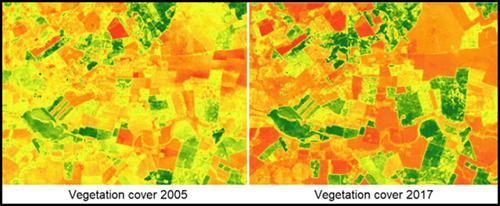
Procedure
Note: This workflow requires the Spatial Analyst license. Refer to ArcGIS Pro: Enable the Spatial Analyst extension for more information.
- Open the ArcGIS Pro project.
- Subtract the NDVI rasters using the Raster Calculator tool for the difference in pixel values over time.
Note: The NDVI rasters must cover the same spatial extent, and the pixels must be perfectly aligned. Additionally, to detect annual changes, acquire NDVI rasters calculated for the same window of the year. Otherwise, NDVI rasters calculated in different seasons reflect vegetation changes over seasons, not years.
- On the ArcGIS Pro ribbon, click Analysis, and click Tools.
- In the Geoprocessing pane, search for and select Raster Calculator (Spatial Analyst Tools).
- In the Raster Calculator pane, type the following expression to subtract the raster of an earlier time from the raster of a later time:
"<raster of a later time>" - "<raster of an earlier time>"
- Specify a name for Output raster, and click Run.
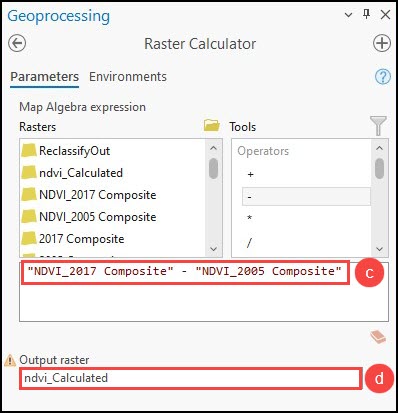
The output raster contains the subtracted cell values. Negative values indicate losses while positive values indicate gain. Zero ‘0’ indicates unchanged vegetation cover.
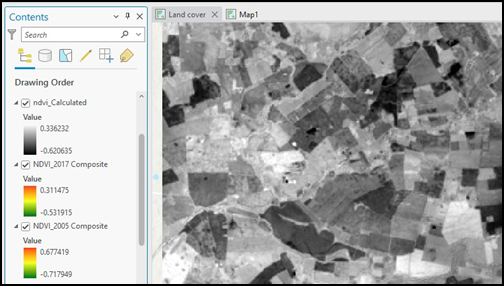
- Reclassify the classes of the raster from Step 2 using the Reclassify tool to reflect vegetation change direction and extent. For example, (a) Vegetation loss; (b) No change, and (c) Vegetation gain.
- In the Geoprocessing pane, search for and select Reclassify (Spatial Analyst Tools).
- Select the output raster from Step 2 for Input raster.
- Select VALUE for Reclass field.
- Under Reclassification, click Classify.
- In the Classify window, select a method for the classification in the Method drop-down list, and select the number of classes in the Classes drop-down list. In this example, the Natural Breaks (Jenks) method and 3 classes are selected.
- Click OK in the Classify window.
- In the Reclassify pane, specify the output name for Output raster, and click Run.
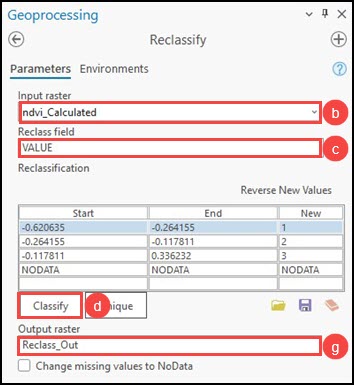
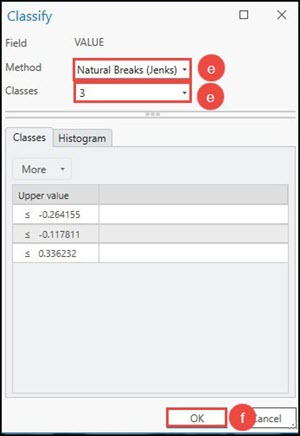
A reclassified raster is created with pixel values indicating the vegetation change classes. A Count field is added to the attribute table of the reclassified raster containing the number for cells falling into each class.
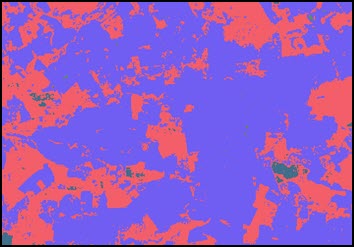
- Quantify the changes by creating a new field and calculate the area of each class by multiplying the Count field with the pixel size of the raster layer.
- In the Contents pane, right-click the output from Step 3, and click Attribute Table.
- Click Add Field.
- On the Fields tab, specify a name for Field Name, and select Double for Data Type.
- Click Save on the ArcGIS Pro ribbon.
- On the attribute table, right-click the new field, and click Calculate Field.
- In the expression box, multiply the Count field by the pixel (cell) size of the raster layer. In this example, the pixel size is 30. Refer to ArcGIS Pro: Pixel size of image and raster data for more information.
- Click OK.
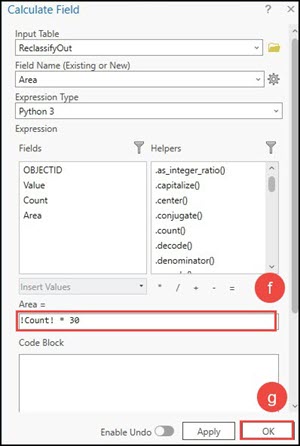
The area for each class is calculated in the new field. The unit of the calculated area is the unit of the raster’s coordinate system.
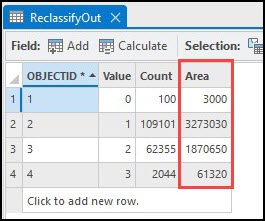
Note: To determine the raster’s coordinate system, right-click the raster layer in the Contents pane and navigate to Properties > Source > Spatial Reference.
Article ID: 000030638
- ArcGIS Pro 3 1
- ArcGIS Pro 3 0
- ArcGIS Pro 2 9x
Get help from ArcGIS experts
Start chatting now

